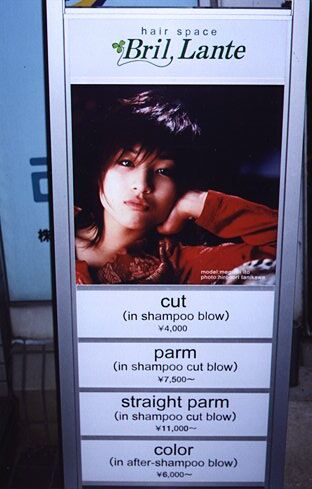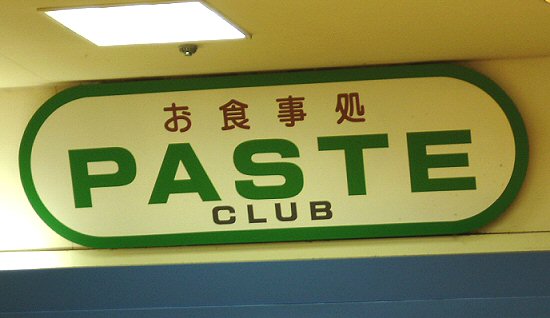
I have been researching how well the English education system has progressed in Japan compared to before. I would like to ask everybody who is reading my Soap Box to do me a favor. I have introduced my article which appeared in the “KOE RAN” of the Asahi Simbun in 1984. I would be pleased if you would send me your comments about the current situation and what improvements have been made. Thank you in advance. Please keep in mind that this article was written 25 years ago and although I am aware that some improvements have been made, I believe that more improvements are still sorely lacking.
(The Asahi Simbun June 29th, 1984)
I am an American who has been living in Japan for 6 years. I have been thinking about how the content, the focus and methods of the English education system in Japan are influenced by how to succeed in the entrance examinations. I propose that listening and speaking tests be included In the English section of entrance examinations of high schools and universities.
My reason for making this proposal is to improve the real situation in the English education system in Japan which does not recognize the importance of listening and speaking in the English education curriculum, and as this ability is not required for the entrance examinations Japanese schools do not emphasize this ability. Over time, although the need for more people to acquire English speaking ability is increasing year after year, the current situation in English education in Japanese schools has led to only a small portion of the people acquiring those abilities.
If this improvement proposal were implemented in the entrance examinations of high schools and universities English, I think this problem would gradually be solved. In addition, I believe such an improved English education system is quite useful for the Japan’s future progress toward internationalization..,(Al. S. Bartle)
<To people who have a comment related to this article>
Please send it to the address below. I would be grateful for your support.
Al Bartle
Instructor, Okamoto School
Smith’s School of English
3-7-17-2F Motoyamakitamachi,
Higashinadaku, Kobe, 658-0003
Email: gep204@yahoo.com

Al, there is no doubt that you are spot on, nevertheless, whilst ever the current system continues there is an explicit need for privately owned English conversation schools, (and Smith’s School of English just happens to be one of the best in Japan) to persist and grow, which they will obviously do in such a short-sighted English edification environment.
How can the Japanese Education system with its katakana syllabary symbols, used for writing transliteration of non-Japanese words, and consequently by default the foundation of its English pronunciation system, produce an accurate, relaxing, enjoyable learner induced atmosphere as we Smith’s School of English coaches of communicative confidence are able to do in small classes of three of less students.
I personally think that is is virtually impossible for the Japanese education system, restricted by its class sizes, to successfully deliver listening and speaking tuition of a standard that is required to proficiently communicate in English.
In conclusion I unquestionably agree with you that English competency levels revolve around more than just grammar and written English, which the following paragraph from my post of May 21st clearly supports.
“…It is consequently apparent that when teaching and/or learning English it must encompass the four elements; listening, writing, reading and speaking which requires a long term dedicated aspiration in order to become adept in English language communication.”
Ken,
You bring up some very important obstacles to the progress of English education in Japan. Katakana is an excellent invention by the Japanese. It allows them to borrow words from virtually all languages on earth and use them in Japanese. All words become nouns by default and have to be adapted to become adjectives and verbs. In fact many of the original Chinese characters are even treated first as nouns and then made into verbs by adding SURU. Such as CHOKIN SURU, RIKAI SURU etc. But it is even possible for us non-Japanese to use English words in Japanese sentences by using the KATAKANIZED words by adding SURU (to form a noun or NA (To make an adjective). Example: ADOJYASUTORU SURU instead of the Japanese (CHOSEI SURU) or BYUTIFURU NA instead of the Japanese (UTSUKUSHII). Yes, it is an amazing invention by the Japanese. But it is also the biggestt impediment to Japanese learning the correct English pronunciation.
Also, your mention that the larger class sizes do not lend themselves to the teaching of Listening and Speaking is a valid argument but not an acceptable reason to not try harder to do it. If you look at my post of a simple English test on the Japanese site, you will see that, there are even more basic problems that must be addressed in the Japanese English education system. http://www.smithweb.co.jp/soapbox/200906/難しい英語を習う前に/ (You will have to go to Al’s Room from there to see the post).
But you are also dead on concerning the fact that a Smith’s school is the best place to learn English in Japan. With our small class size of a maximum of 3 persons and our reasonable monthly tuition system, there really is not better choice for Japanese students who want to acquire English proficiency.
Al (SSE Okamoto)
Al, your posting brings up 2 separate matters from my recent experience in teaching English. One of my students, who is a highly articulate and outspoken senior manager in local government (who also has a great sense of humour) told me that in any interview or test for entry into a job or educational institute, the only way that both the applicant and the adjudicator know how to approach this is to use a multiple choice of 5 answers. We both laughed, but I think there is a lot of truth in this. There is supposed to be a major change in the state system moving toward speaking English, but as long as the “multiple choice” approach is followed there is not likely to be much improvement.
Regarding the actual teaching in schools, I do agree with you. Before I joined Smith’s, I taught at a small English school. The approach was to teach directly from books, a number of pages per lessons, and then onto the next book. I think that this is close to the state teaching system. Some students had been at this school for several years, but when I asked questions that had not been directly covered in the books, I was met with blank stares. This is where the SSE system is so strong. Some of the new students that I have taken on since I started in March this year have told me that thaey were beginers at their trial lessons, yet showed a very good level of ability in grammar. I have found that with these students, I have been able to get them much more confident, and really speaking English and enjoying it in only a few weeks, and really feeling good about it.
Sorry for so many words.
John
SSE Kawanishi